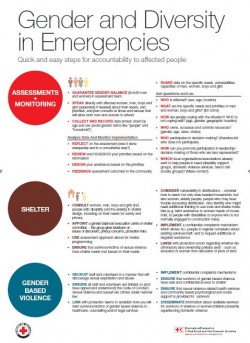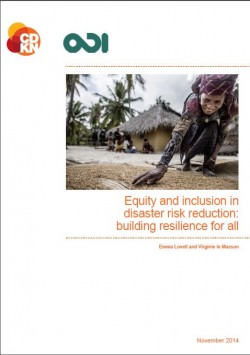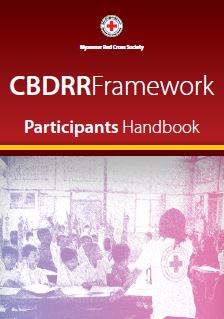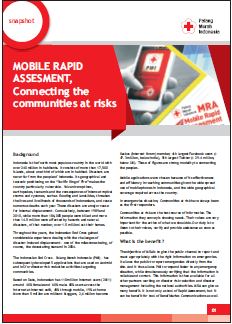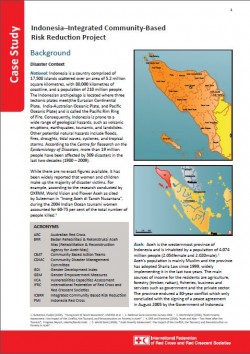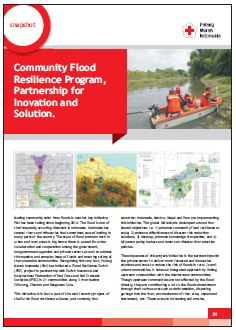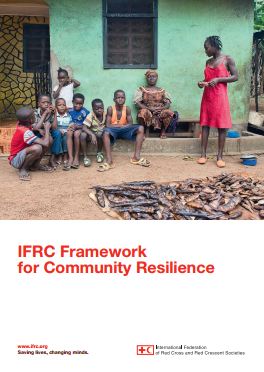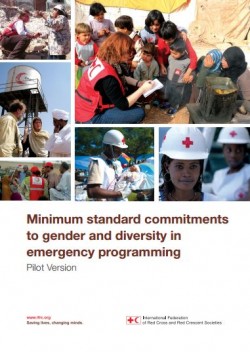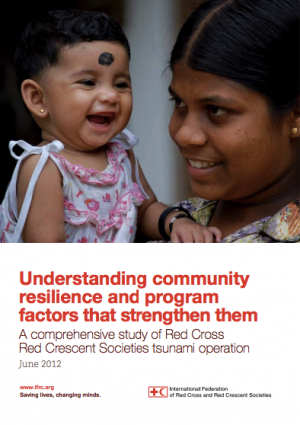Purpose
This poster looks at the steps for accountability to affected people in assessments and monitoring; shelter and gender-based violence.
Overview
- In assessments and monitoring, the steps involve: guaranteeing gender balance in the assessment team; speaking directly with affected women, men, boys and girls (separately if needed) about their needs, and priorities; collecting and recording data broken down by age and sex; analysing data and monitoring implementation; and asking questions – who, what, how and which.
- In shelter, the steps involve: consulting women, men, boys and girls (including people with disabilities, and the elderly) in shelter design; appointing a gender-balanced evacuation centre or shelter committee; using the assessment approach mentioned above for shelter programming; ensuring that survivors/victims of sexual violence have shelter needs met based on their needs; considering vulnerability in distributions; implementing a mechanism for making confidential complaints; and liaising with protection actors on whether discriminatory land-ownership policies exist.
- In gender-based violence, the steps involve: recruiting staff and volunteers in a manner that will discourage sexual exploitation and abuse; ensuring that all staff and volunteers are briefed on the code of conduct; linking with protection teams to establish how you will refer survivors/victims of gender based violence to relevant support services; implementing mechanisms for making confidential complaints; ensuring that survivors of gender-based violence have safe access to shelter; ensuring that health services and community based psychological and social support are provided for survivors of sexual violence; and disseminating information about available services for survivors of violence or women/children presently experiencing domestic violence.
Usage: Guidance for project implementation
Themes: Risk assessment, Community-based or community participation, Gender-based violence, Mental health and psychosocial needs, Shelter, Human resources, Accountability to beneficiaries, Gender, Age (elderly), Age (children/youth)
Audiences: Technical staff; Gender and diversity practitioners
Reference: International Federation of Red Cross and Red Crescent Societies & The Vanuatu Red Cross Society. Gender and diversity in emergencies: Quick and easy steps for accountability to affected people.p.1.
![]()


